TL;DR
For drought‑tolerant landscaping that looks modern and stays low‑maintenance, focus on permeable hardscaping, native or climate‑adapted plants, and clear path geometry. Start with a 36–48 inch primary walkway, a 1–2% patio slope for drainage, and 2–3 mulch depth to suppress weeds. Use angular gravel, steel edging, and drip irrigation to cut water use. Want to preview your front yard before you commit? Upload a photo to ReimagineHome.ai and test styles, materials, and layouts: https://www.reimaginehome.ai/?utm_source=blog
Why Outdoor Design and Curb Appeal Matter Right Now
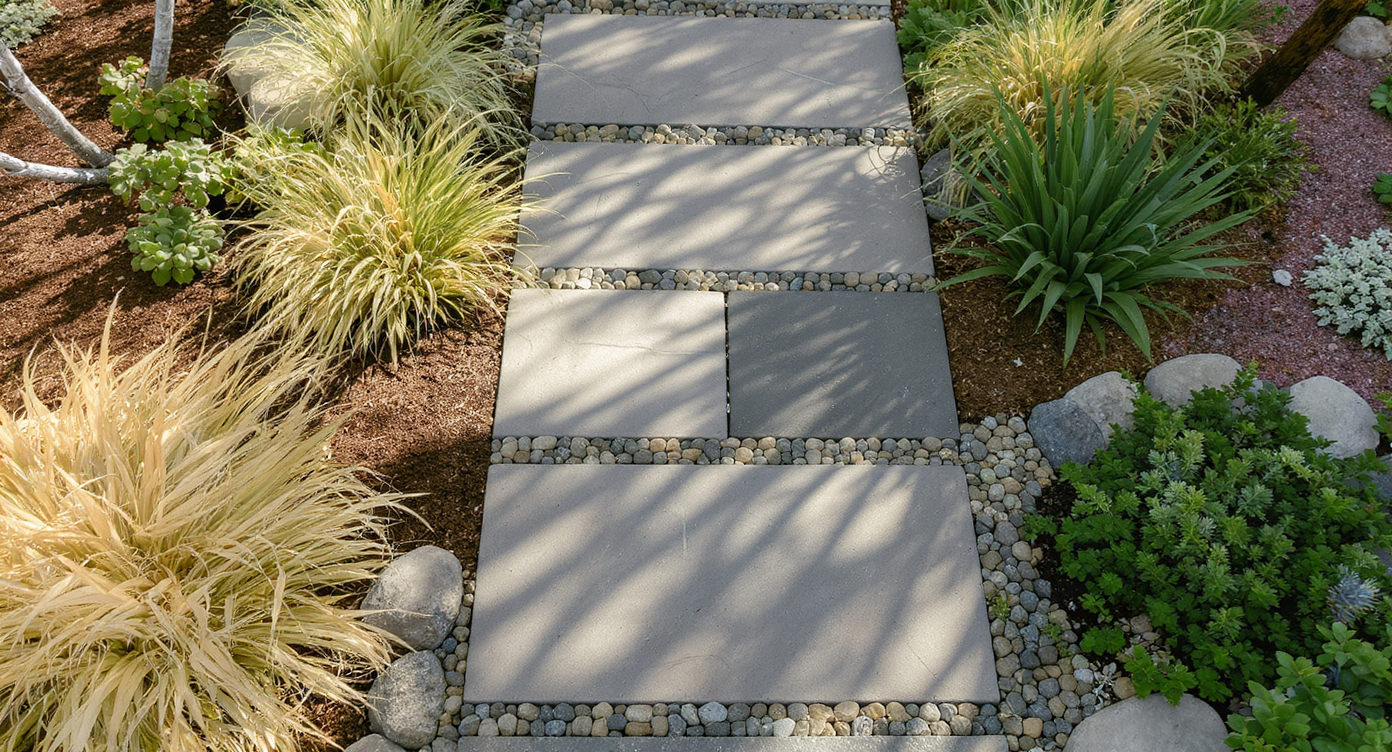
Garden paths 36–48 inches wide set the foundation for comfortable, intentional front yard design.
Primary garden paths typically range from 36–48 inches wide for comfortable use and accessible movement. In front yard landscaping, that single measurement sets the tone for circulation, planting massing, and lighting that make a low‑maintenance yard feel intentional. Thoughtful hardscaping, drought‑tolerant plants, and subtle landscape lighting can boost perceived home value and reduce water use at the same time. For modern curb appeal, invest in crisp edges, permeable materials, and planting layers that deliver privacy and year‑round structure.
Why Landscaping, Gardening & Hardscaping Are Changing
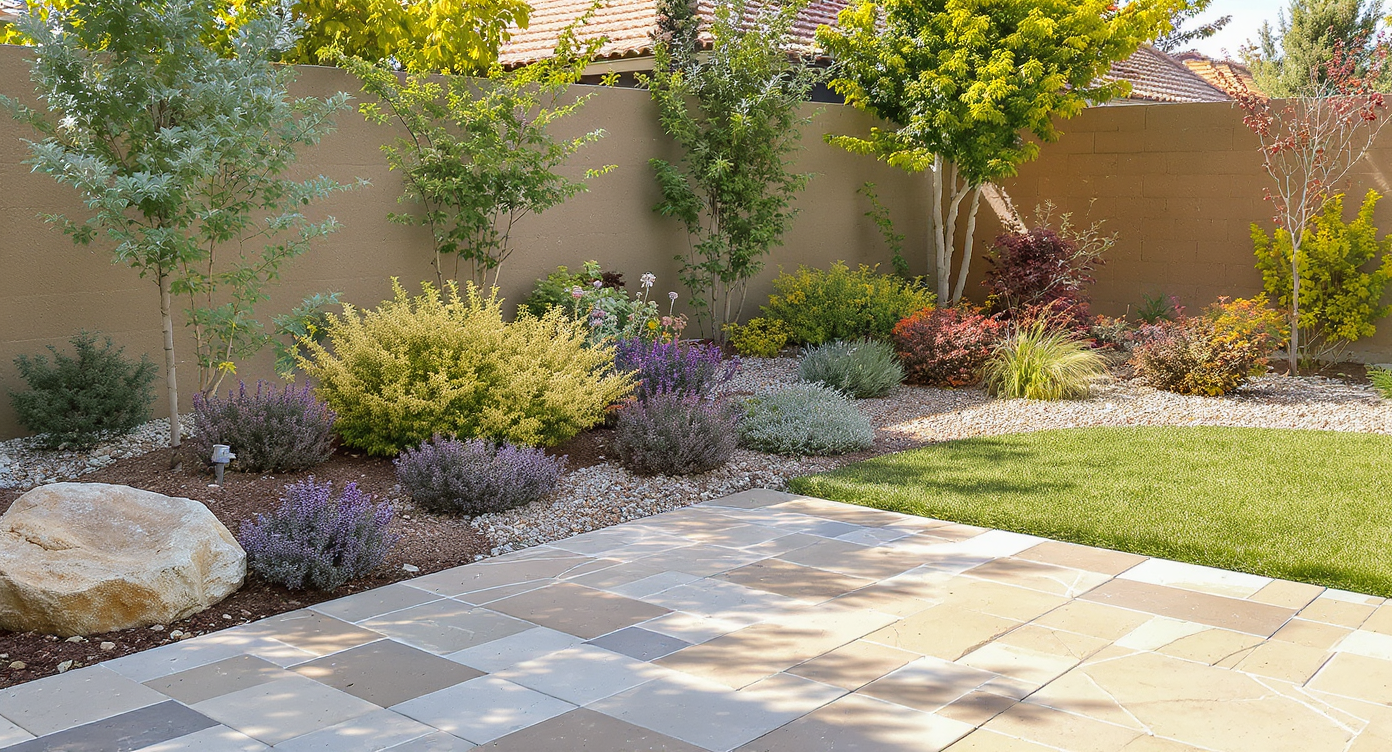
Hardscaping and drought-resistant plants shape efficient, budget-conscious modern landscapes.
Hardscape elements often account for 50–70% of a low‑maintenance yard budget, because patios, paths, and walls determine grading, drainage, and long‑term upkeep. Climate pressures and rising water costs are pushing homeowners toward drought‑tolerant landscaping, drip irrigation, and smaller, durable lawn panels. Work‑from‑home lifestyles have also shifted expectations: front porches become outdoor rooms, side yards become utility corridors, and front yards split into distinct zones—play, arrival, and a water‑wise garden. Material palettes are quieter (stone, gravel, composite or hardwood slats), while plant choices lean native or climate‑adapted to survive heat spikes and sporadic rainfall with minimal fuss.
Anecdote
A homeowner split a Southern California front yard into a drought‑tolerant garden and a compact lawn using a straight paver walk as the divider. Steel edging and angular gravel kept the rock from wandering onto the sidewalk, while drip irrigation and mulch slashed watering. Cooler‑temperature lighting swapped in later eliminated window glare and improved nighttime ambiance.
Key Landscaping & Hardscaping Trends (and How ReimagineHome.ai Shows Them)
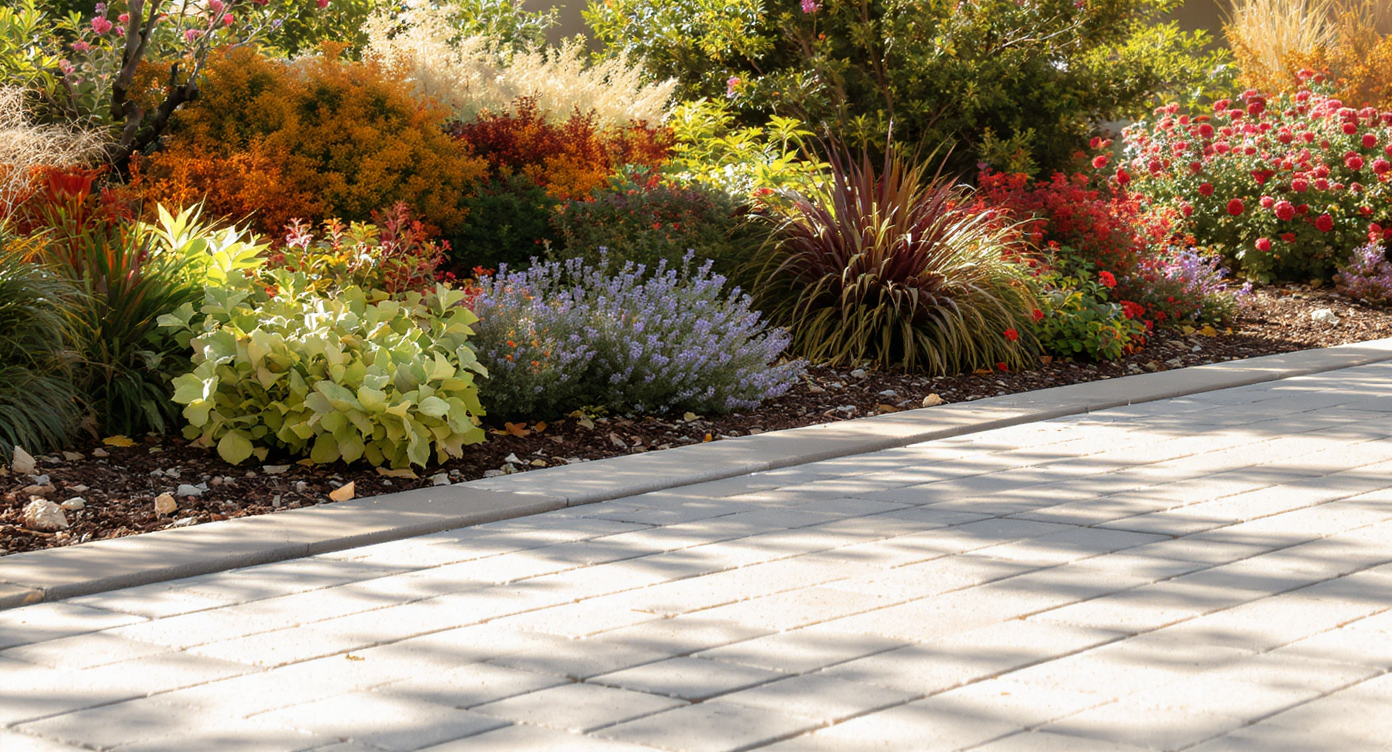
Key landscaping trends include sloped permeable patios that manage water and layered planting for visual impact.
Experts recommend a 1–2% slope for patios and paved areas to move water away from structures without causing trip hazards. That single rule reduces heaving, staining, and puddling—especially important with black limestone, concrete, or large‑format pavers used in modern hardscaping design. - Layered planting and year‑round structure - Stone, gravel, and stepping‑stone paths - Outdoor rooms, seating pockets, fire pits - Drought‑tolerant and native planting layouts - Modern curb appeal changes that boost value Layered planting combines 24–36 inch shrubs, 12–18 inch groundcovers, and 36–60 inch architectural grasses to frame windows and soften stacked stone veneer. Angular crushed gravel (3/8–3/4 inch) locks better than rounded pea gravel for paths and side strips; pair it with 4 inch steel edging to keep rock off sidewalks. In compact spaces, a hardwood slat fence can define a child‑friendly forecourt while still reading open and modern. ReimagineHome.ai lets you preview all of this—materials, lighting color temperature (2700–3000K warm vs. 3000–3500K neutral), grading steps, and planting massing—by overlaying options onto a photo of your home so you can compare versions before you build.
How to Use ReimagineHome.ai to Visualize Yards, Paths & Patios
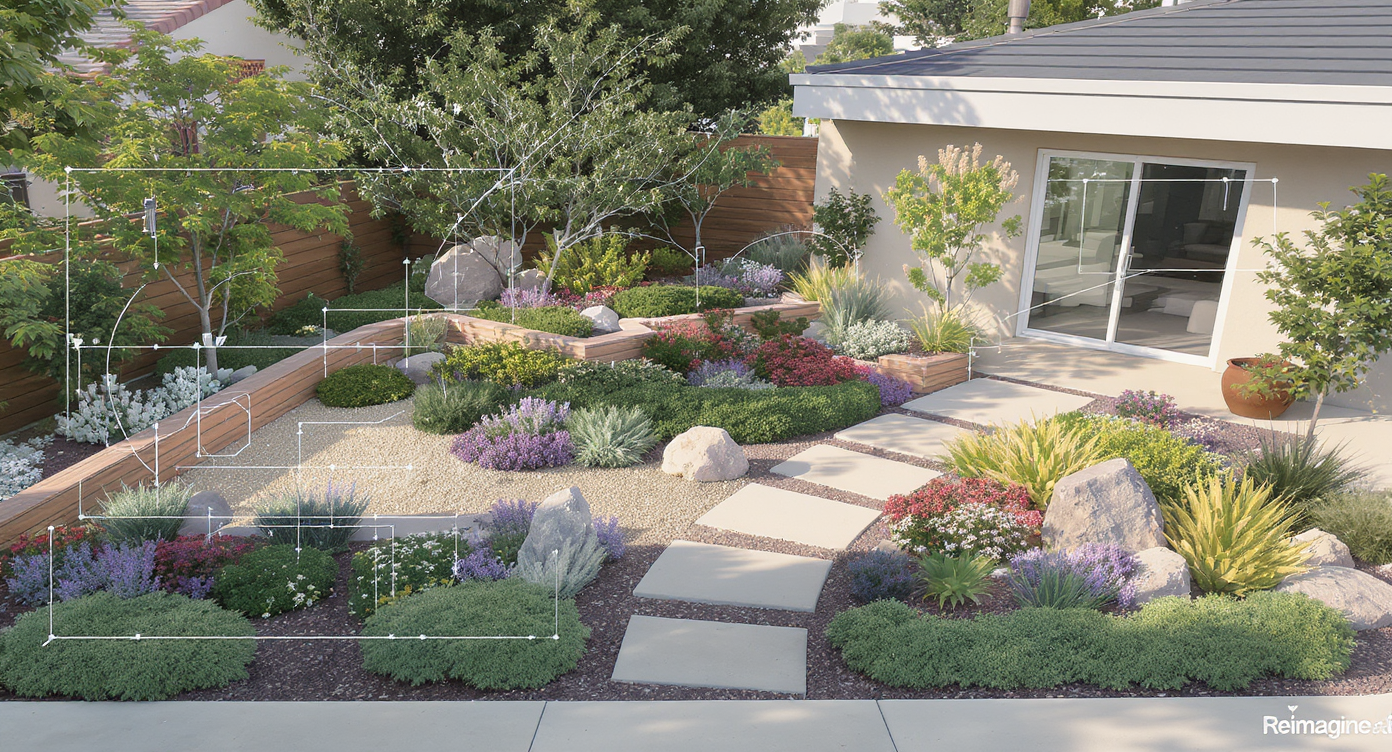
ReimagineHome.ai helps visualize thoughtful yard layouts with proper plant spacing and defined paths.
For airflow and maintenance, shrubs should be planted 18–24 inches from foundations and 6–12 inches from fences to allow growth and cleaning access. 1. Upload a clear exterior or yard photo. 2. Pick a style or function (drought‑tolerant landscaping, modern curb appeal, family‑friendly, pollinator garden). 3. Test path shapes (straight, S‑curve), patio sizes (10×12 for four seats, 12×16 for six), step counts, and terraces. 4. Experiment with planting layers, low‑glare lighting, and focal points like a specimen tree or house‑number wall. 5. Generate multiple versions and compare side‑by‑side to balance budget, privacy, and maintenance before committing. Use the preview to validate walkway widths, confirm that uplights won’t glare into windows, and ensure a 1–2% hardscape slope redirects water to planting beds rather than the porch.
Real-World Stories — Landscaping & Hardscaping in Action
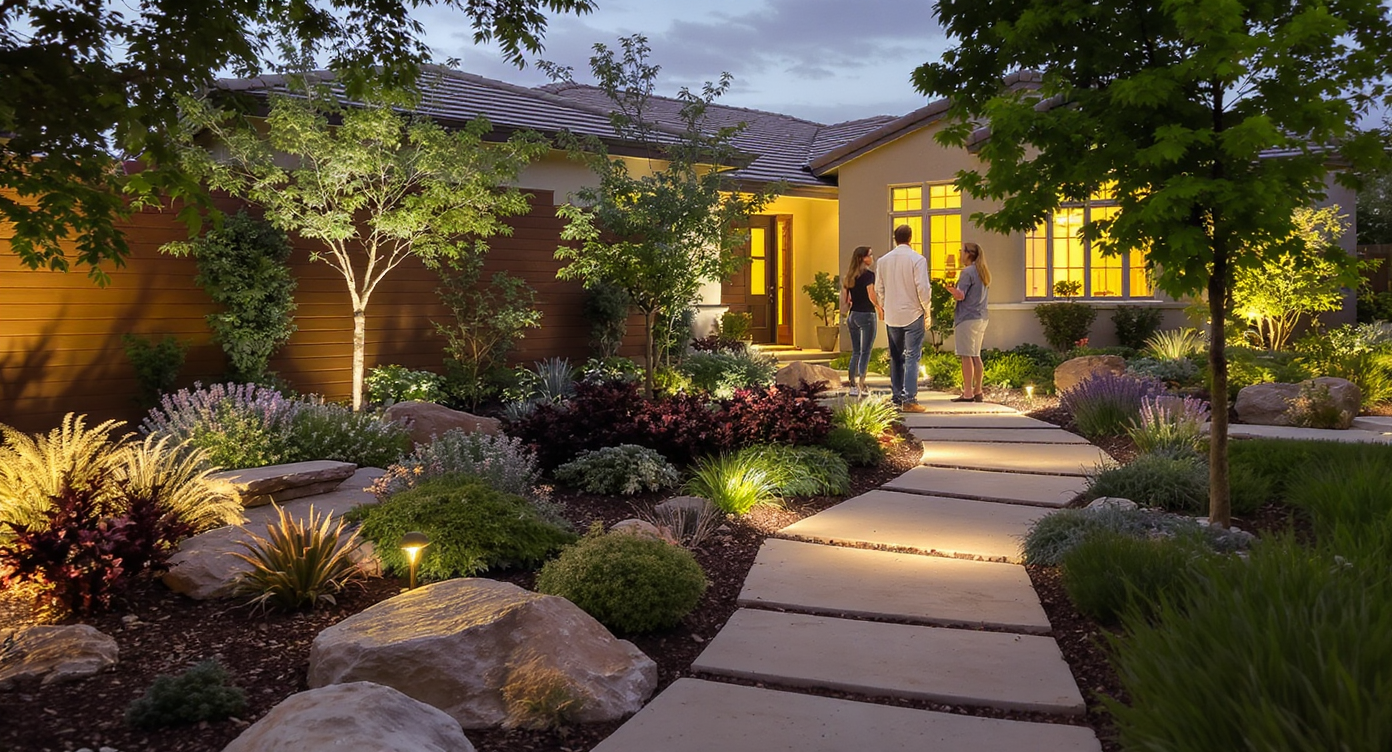
Real-world updates show how layered planting and hardscaping boost curb appeal and home value.
Thoughtful front yard updates can increase perceived home value and listing clicks—modern entry paths and fresh planting can yield outsized first impressions. - A small urban yard redesigned with raised beds and stepping stones for usable space. By swapping a full lawn for a 6‑foot band of native grasses and a permeable stepping‑stone walk, watering dropped by roughly half while maintenance shifted to seasonal trims. Outcome: clean shoes in winter, no puddles, and privacy from the sidewalk. - A seller improving curb appeal ahead of listing. The team replaced dated panels with cooler stacked stone veneer, added a 42‑inch straight walk in charcoal pavers, and tightened lighting to 3000K with shrouded fixtures. Outcome: faster sale, fewer inspection notes thanks to corrected grading, and a timeless palette. - A family yard transformed for play, privacy, and low upkeep. A slatted hardwood fence created a safe forecourt; drought‑tolerant trees like olive, Australian willow, or Arbutus were set 15–25 feet from structures and lines. Outcome: shade where it matters, roots where they won’t, and weekends back. Each scenario avoided a classic mistake: under‑sized paths, light glare, or water‑seeking trees too close to utilities.
Visualization Scenario
Upload a photo of your front elevation to ReimagineHome.ai. Test a 42‑inch charcoal paver walk, a black limestone porch, and stacked stone veneer in a cooler tone. Toggle a hardwood slat fence, add a specimen olive 18 feet from the facade, and compare 2700K vs. 3000K shielded uplights. Save the version that balances privacy, drainage, and budget.
FAQ
- How do I design a small backyard layout? Keep the main path 36–42 inches wide, tuck seating into corners, and use a 12×12 patio minimum for four people. Replace continuous lawn with stepping stones in gravel and drought‑tolerant groundcovers to reduce irrigation and create flow. - How do I create low-maintenance landscaping? Choose native or climate‑adapted plants, drip irrigation, and 2–3 inches of mulch. Use angular gravel in framed beds, permeable pavers, and a simple 2–3 color hardscape palette. Aim for evergreen structure plus seasonal color from salvias, manzanita, lavender, and ornamental grasses. - Can I preview landscaping ideas using a photo? Yes. Upload a front or backyard photo to ReimagineHome.ai to test paths, patios, fences, lighting, and planting schemes side‑by‑side before hiring a crew: https://www.reimaginehome.ai/?utm_source=blog - How far should shrubs be from my foundation? Maintain an 18–24 inch offset for airflow and maintenance. For medium trees, keep 15–25 feet from structures and utilities; avoid water‑seeking species near lines. - What materials work best for modern hardscaping? Cast‑in‑place concrete, large‑format pavers, porcelain tile, and natural stone pair well with crushed gravel. Rule‑of‑thumb: limit to 2–3 materials and maintain a 1–2% slope for drainage and safety.
Visualize Your Home’s Next Chapter
Seat walls are most comfortable at 17–19 inches high, and the same attention to human scale should guide every outdoor decision. Limit your hardscape palette to two or three complementary tones, keep lawns compact, and plan views from inside out. Size paths at 36–48 inches, set patios to a 1–2% slope, and use drip lines at 0.4–0.6 gph to deliver water where it counts. Dial landscape lighting to shielded, warm‑neutral beams and layer heights to avoid light pollution while highlighting texture. ReimagineHome.ai can help you model each move before you break ground, turning guesswork into clarity.
.svg)

.svg)


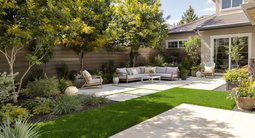
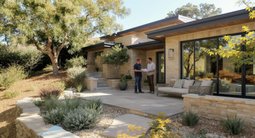


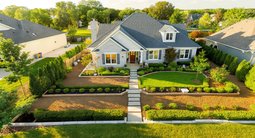
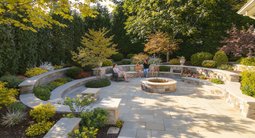


.png)